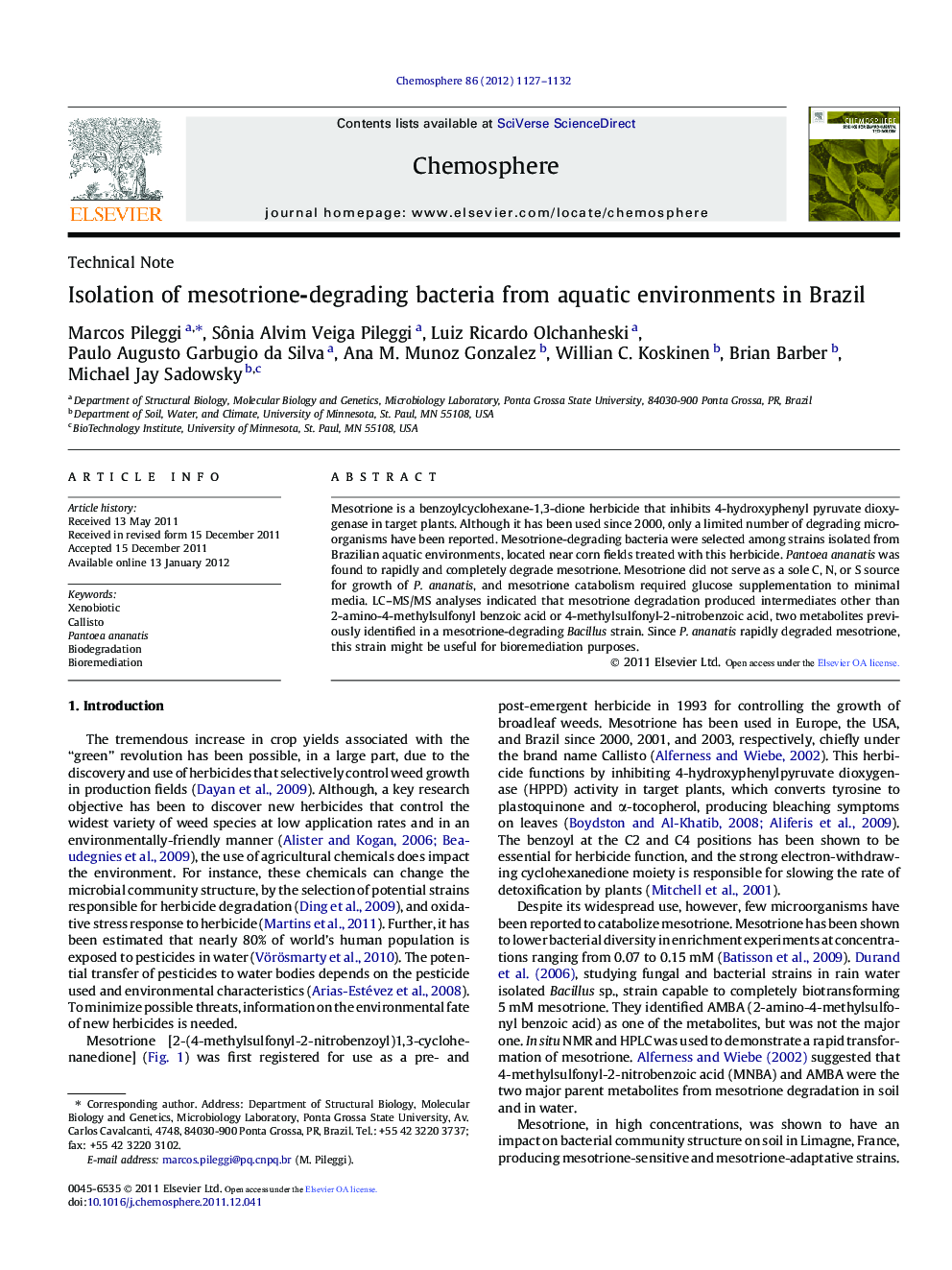| Article ID | Journal | Published Year | Pages | File Type |
|---|---|---|---|---|
| 6311488 | Chemosphere | 2012 | 6 Pages |
Mesotrione is a benzoylcyclohexane-1,3-dione herbicide that inhibits 4-hydroxyphenyl pyruvate dioxygenase in target plants. Although it has been used since 2000, only a limited number of degrading microorganisms have been reported. Mesotrione-degrading bacteria were selected among strains isolated from Brazilian aquatic environments, located near corn fields treated with this herbicide. Pantoea ananatis was found to rapidly and completely degrade mesotrione. Mesotrione did not serve as a sole C, N, or S source for growth of P. ananatis, and mesotrione catabolism required glucose supplementation to minimal media. LC-MS/MS analyses indicated that mesotrione degradation produced intermediates other than 2-amino-4-methylsulfonyl benzoic acid or 4-methylsulfonyl-2-nitrobenzoic acid, two metabolites previously identified in a mesotrione-degrading Bacillus strain. Since P. ananatis rapidly degraded mesotrione, this strain might be useful for bioremediation purposes.
⺠Pantoea ananatis was isolated in a Brazilian river near mesotrione treated fields. ⺠This bacterium completely degrades mesotrione without producing toxic substances. ⺠P. ananatis does not use mesotrione as carbon, nitrogen or sulfur source. ⺠The degradation probably goes through a cometabolic pathway. ⺠Callisto® adjutants prevent P. ananatis growth in herbicide high concentrations.
